Magnolia trees are known for their beautiful, lush foliage and stunning flowers. However, sometimes white spots can appear on the leaves of these trees, causing concern for gardeners and homeowners. These white spots can be a sign of various diseases and pests that can affect the health and vigor of the magnolia tree.
Understanding the causes of white spots on magnolia tree leaves is crucial to properly identifying and treating the issue. Common causes of white spots include fungal diseases like powdery mildew and bacterial infections, as well as pests like spider mites and scale insects.
Identifying the specific disease or pest is important for determining the proper treatment and prevention methods.
Maintaining a healthy magnolia tree requires proper care and attention, including regular watering, fertilization, and pruning. Preventive measures like proper plant spacing and timely application of treatments can help reduce the severity of white spot issues.
Proper disposal of infected leaves is also important for preventing the spread of diseases. By taking these steps, gardeners and homeowners can enjoy a healthy and vibrant magnolia tree.
Key Takeaways
- White spots on magnolia leaves can be a sign of various diseases and pests that can affect the health of the tree.
- Identifying the specific cause of white spots is important for determining the proper treatment and prevention methods.
- Proper care and attention, including regular watering, fertilization, and pruning, can help maintain a healthy magnolia tree and prevent white spot issues.
Check out these other top posts in this category:
Understanding White Spots on Magnolia Leaves
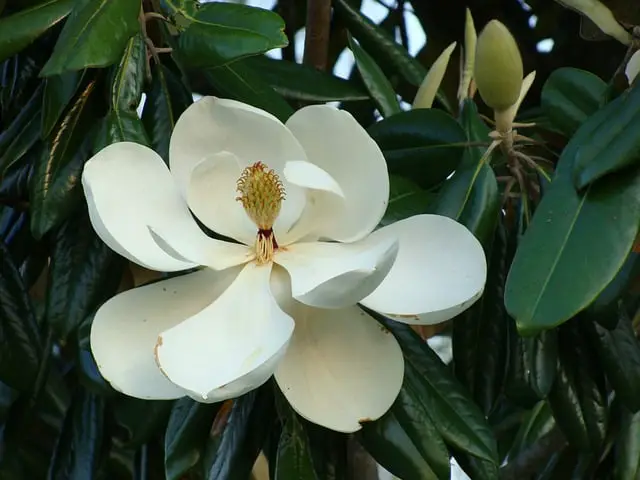
Magnolia trees are known for their beautiful flowers and glossy green leaves. However, sometimes these leaves can develop unsightly white spots, which can be a sign of various diseases and pests.
The most common cause of white spots on magnolia leaves is a fungal disease called powdery mildew. This disease is caused by spores and can lead to a gray or white film covering the leaves and sometimes branches of the magnolia tree.
Powdery mildew thrives in humid conditions and can spread quickly, so it’s important to address the issue as soon as possible.
Another cause of white spots on magnolia leaves is algae leaf spots. These spots are caused by a type of algae that grows on the leaves, usually in areas where the tree is receiving too much water or is not getting enough air circulation. Algae leaf spots are usually harmless to the tree, but they can be unsightly.
Magnolia scale is another pest that can cause white spots on magnolia leaves. These small insects attach themselves to the leaves and suck the sap out of the tree, causing damage and discoloration. If left untreated, magnolia scale can weaken the tree and make it more susceptible to other diseases and pests.
To prevent and treat white spots on magnolia leaves, it’s important to maintain good tree health. This includes proper watering, fertilization, and pruning to ensure adequate air circulation. If white spots do appear, removing affected leaves and applying a fungicide or insecticide can help control the issue.
Common Causes of White Spots
White spots on magnolia tree leaves are a common sight that can be caused by several factors. The most common causes of white spots on magnolia leaves are fungal diseases, including powdery mildew and fungal leaf spots.
These fungal diseases typically thrive in moist conditions and can be spread by fungal spores that are carried by wind, water, or insects.
Powdery mildew is a fungal disease that affects many plants, including magnolia trees. It appears as a white, powdery substance on the surface of the leaves, and can be caused by a number of different fungi.
The disease is most active during warm summer months, and can be prevented by maintaining good air circulation around the tree and avoiding overhead watering.
Fungal leaf spots are another common cause of white spots on magnolia leaves. These spots are caused by various species of fungi that attack the leaves, causing them to develop white or brown spots.
The spots can be circular or irregular in shape and can vary in size. Fungal leaf spots can be prevented by keeping the tree healthy and avoiding overhead watering.
Algal leaf spot is another cause of white spots on magnolia leaves. This condition is caused by an alga that grows on the surface of the leaves, causing them to develop white or yellow spots.
Algal leaf spot is most common in humid climates and can be prevented by maintaining good air circulation around the tree and avoiding overhead watering.
Identifying Specific Diseases and Pests
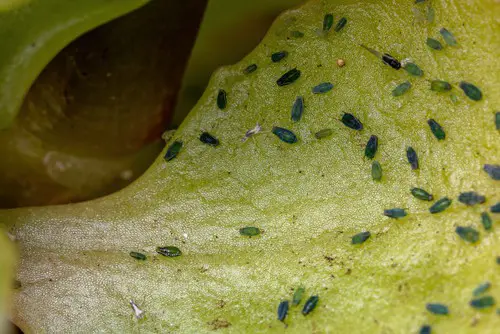
Magnolia trees can be affected by various diseases and pests that cause white spots on their leaves. Identifying the specific disease or pest is crucial to determine the appropriate treatment.
1. Powdery Mildew
Powdery mildew is a fungal disease that affects magnolia leaves. It is characterized by the appearance of white or gray powdery spots on the leaves. The fungus thrives in warm and humid conditions, and it can spread rapidly if left untreated.
Powdery mildew can weaken the tree and cause defoliation, which can be detrimental to its health.
2. Scale Insects
Scale insects are a common pest that can infest magnolia trees. They are small, oval-shaped insects that attach themselves to the leaves and stems of the tree. Scale insects feed on the sap of the tree, which can cause yellowing and wilting of the leaves.
They also secrete a sticky substance called honeydew, which can attract ants and other insects. There are different types of scale insects that can affect magnolia trees, including false oleander scale, magnolia scale, and oleander scale.
3. False Oleander Scale
False oleander scale is a type of scale insect that can infest magnolia trees. It is characterized by the appearance of white, waxy, and oval-shaped scales on the leaves and stems of the tree.
False oleander scale can cause yellowing and wilting of the leaves, as well as the development of sooty mold. Infestations can be severe and can weaken the tree over time.
4. Magnolia Scale
Magnolia scale is another type of scale insect that can infest magnolia trees. It is characterized by the appearance of brown, shell-like scales on the branches and twigs of the tree.
Magnolia scale can cause yellowing and wilting of the leaves, as well as the development of sooty mold. Infestations can be severe and can weaken the tree over time.
Effects on the Magnolia Tree
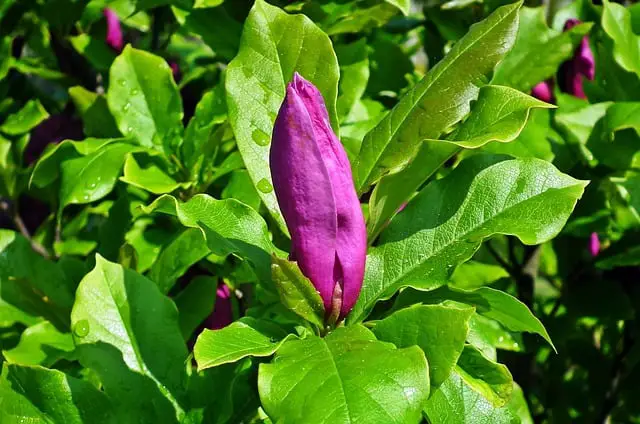
White spots on magnolia leaves can have adverse effects on the tree’s overall health and appearance. The severity of the effects depends on various factors, including the size and maturity of the tree, the extent of the infestation, and the type of disease or pest causing the spots.
The white spots on magnolia leaves can reduce the tree’s ability to photosynthesize, leading to stunted growth and weakened branches. The leaves may also turn yellow, brown, or black and fall off prematurely, further weakening the tree. In severe cases, the tree may die.
The white spots can also affect the magnolia tree’s flowers, reducing their size, number, and quality. This can have a significant impact on the tree’s ornamental value, as magnolia trees are known for their showy, fragrant flowers.
The branches of the magnolia tree can also be affected by the white spots. Fungal diseases like powdery mildew can weaken the branches, making them more susceptible to breakage or damage from wind, snow, or ice. This can pose a safety hazard to people and property near the tree.
Preventive Measures and Treatment
Preventing white spots on magnolia leaves is easier than treating them. Regular maintenance and care can help reduce the risk of fungal infections and other diseases. Here are some preventive measures that can help keep your magnolia tree healthy:
- Watering: Overwatering can lead to fungal growth, so it’s important to water your magnolia tree properly. Water the tree deeply once a week, and allow the soil to dry out partially between waterings. Avoid splashing water on the leaves, as this can promote fungal growth.
- Pruning: Prune your magnolia tree regularly to remove any dead or diseased branches. This can help improve air circulation and reduce the risk of fungal infections. Make sure to sterilize your pruning tools between cuts to prevent the spread of disease.
- Soil: Magnolia trees prefer well-draining soil that is rich in organic matter. Make sure the soil around your tree is not compacted, as this can restrict root growth and lead to stress. Consider adding a layer of mulch around the base of the tree to retain moisture and regulate soil temperature.
- Chemical Control: If preventive measures fail and your magnolia tree develops white spots on its leaves, chemical control may be necessary. Copper-based fungicides and horticultural oils can be effective in treating fungal infections. Insecticides and pesticides may also be necessary to control pests that can damage the tree.
It’s important to note that some magnolia tree species are more resistant to fungal infections than others. If you’re planning to plant a magnolia tree, consider choosing a species that is known for its disease resistance. With proper care and maintenance, your magnolia tree can provide years of beauty and enjoyment.
Application and Timing of Treatment
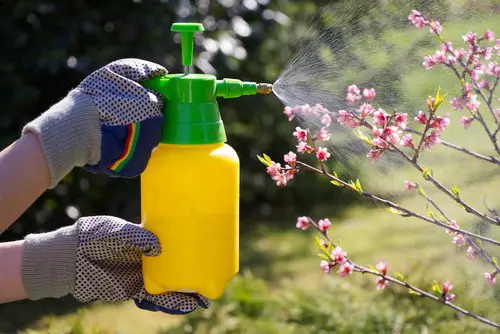
To effectively treat magnolia tree white spots on leaves, it is important to apply the treatment at the right time and follow the directions on the label carefully.
Most treatments for magnolia tree white spots on leaves are fungicides, which work by preventing fungal spores from germinating and spreading. These treatments should be applied at the first sign of white spots and repeated every two weeks until the spots disappear.
When applying fungicide, it is important to wear protective clothing, including gloves, long sleeves, and pants. The treatment should be applied to both the top and bottom of the leaves, as well as the branches and trunk of the tree.
The directions on the label should be followed carefully, including the recommended amount of fungicide to use and the frequency of application. Overuse of fungicide can lead to resistance, making it less effective in the future.
In addition to fungicide, other steps can be taken to prevent magnolia tree white spots on leaves, such as pruning infected branches and avoiding overhead watering. Regular maintenance, including fertilizing and watering, can also help keep the tree healthy and less susceptible to disease.
Proper Disposal of Infected Leaves
When dealing with magnolia tree white spots on leaves, it is important to properly dispose of infected leaves to prevent the spread of disease. Here are some tips on how to do it:
- Do not compost infected leaves. The fungus or bacteria causing the white spots can survive in compost and can infect other plants when the compost is used as fertilizer. It is best to dispose of infected leaves in the trash.
- Bag infected leaves. When collecting infected leaves, it is important to put them in a plastic bag to prevent the spores from spreading. Tie the bag tightly and dispose of it in the trash.
- Collect fallen leaves. Fallen leaves can also be a source of infection, especially if they are left on the ground for a long time. Collect them regularly and dispose of them in the same way as infected leaves.
- Clean up the area. After collecting infected and fallen leaves, it is a good idea to clean up the area around the magnolia tree. Use a rake or leaf blower to remove any remaining leaves or debris, and dispose of them in the trash.
By following these simple steps, you can help prevent the spread of disease and keep your magnolia tree healthy.
Maintaining a Healthy Magnolia Tree
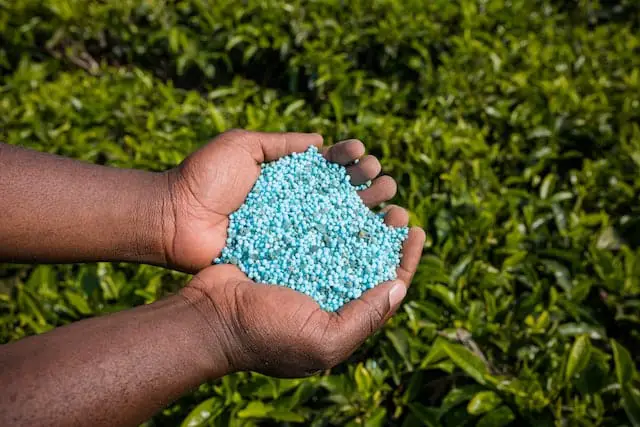
To maintain a healthy magnolia tree, there are several factors that need to be considered. Here are some tips to help keep your magnolia tree healthy and free from white spots on its leaves.
1. Soil and Watering
Magnolia trees prefer well-drained soil that is slightly acidic. They also like to be watered regularly, especially during the growing season. It is important to water the tree deeply, but not too frequently. Overwatering can lead to root rot and other problems.
2. Pruning and Trimming
Pruning and trimming are essential for maintaining a healthy magnolia tree. Regular pruning helps to promote healthy growth and removes dead or diseased wood. It is best to prune in the winter when the tree is dormant. Avoid pruning in the spring or summer when the tree is actively growing.
3. Fertilizing
Magnolia trees do not require a lot of fertilizer. However, it is important to provide them with the necessary nutrients to promote healthy growth. A slow-release fertilizer applied in the spring can help to provide the tree with the necessary nutrients.
4. Weed Control
Weed control is important to prevent competition for water and nutrients. It is best to use a mulch around the base of the tree to help prevent weeds from growing. Avoid using herbicides near the tree as they can damage the roots.
5. Winter Care
Winter care is important for magnolia trees, especially in colder climates. It is important to protect the roots from freezing temperatures by adding a layer of mulch around the base of the tree. It is also important to avoid pruning in the spring as this can damage the new growth.
6. Ornamental Care
Magnolia trees are prized for their ornamental value. To keep the tree looking its best, it is important to remove any dead or diseased wood. It is also important to remove any suckers that may be growing from the base of the tree.
By following these tips, you can help to maintain a healthy magnolia tree that is free from white spots on its leaves. Remember to water and fertilize the tree regularly, prune and trim as needed, and protect the tree from cold temperatures in the winter.
Frequently Asked Questions
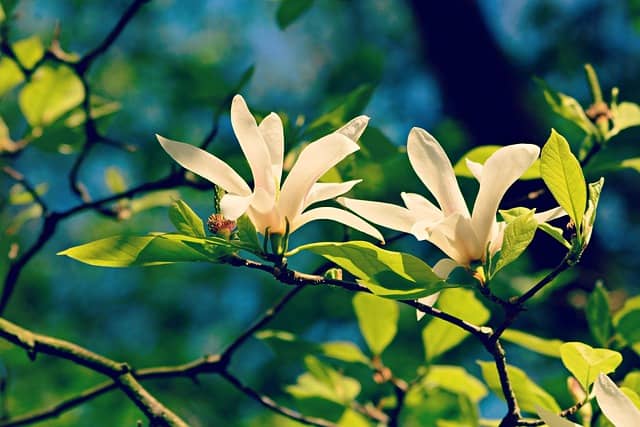
How do you treat white spots on magnolia leaves?
Treatment for white spots on magnolia leaves depends on the cause of the spots. If the cause is powdery mildew, applying a fungicidal spray can be effective.
Pruning affected branches and treating the tree with insecticides can help if the cause is scale insects. If the cause is algae leaf spots, removing affected leaves and improving air circulation around the tree can help prevent further spread.
What are the white spots on a magnolia leaf?
The white spots on a magnolia leaf can be caused by various factors, including powdery mildew, scale insects, and algae leaf spots. Powdery mildew is a fungal infection that appears as white spots on the foliage.
Scale insects are small, oval-shaped insects that attach themselves to the leaves and stems of the tree, causing white or yellow spots. Algae leaf spots are caused by a buildup of organic matter on the tree’s leaves.
What does fungus on a magnolia tree look like?
Fungus on a magnolia tree can appear as white, powdery spots on the leaves, stems, and flowers of the tree. The fungus can spread quickly and cause the leaves to curl and die. If left untreated, the fungus can weaken the tree and make it more susceptible to other diseases and pests.
How do you treat scale on a magnolia tree?
Treating scale on a magnolia tree involves removing affected branches and treating the tree with insecticides. It’s important to prune the tree carefully to avoid damaging the bark and to ensure that all affected branches are removed.
Insecticides can be applied to the tree to help kill any remaining scale insects and prevent further infestation.
What is the best treatment for magnolia scale?
The best treatment for magnolia scale is to prune affected branches and treat the tree with insecticides. Insecticides can be applied to the tree to help kill any remaining scale insects and prevent further infestation.
It’s important to follow the manufacturer’s instructions carefully when applying insecticides to avoid damaging the tree and to ensure that the treatment is effective.
Can magnolia scale kill a tree?
Magnolia scale can weaken a tree and make it more susceptible to other diseases and pests, but it is not usually fatal. If left untreated, however, the scale can cause significant damage to the tree and may eventually lead to its death.
It’s important to treat the tree as soon as possible to prevent further damage and ensure its long-term health.

Hey, I’m Lisa and I’ve been an avid gardener for over 30 years. I love writing, talking and living in the garden! Feel free to connect with me on my socials below


